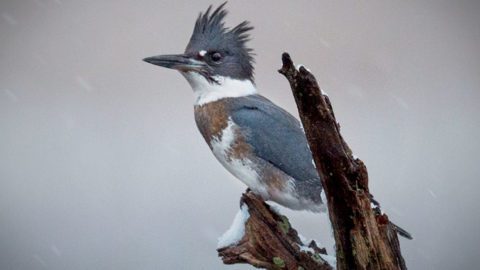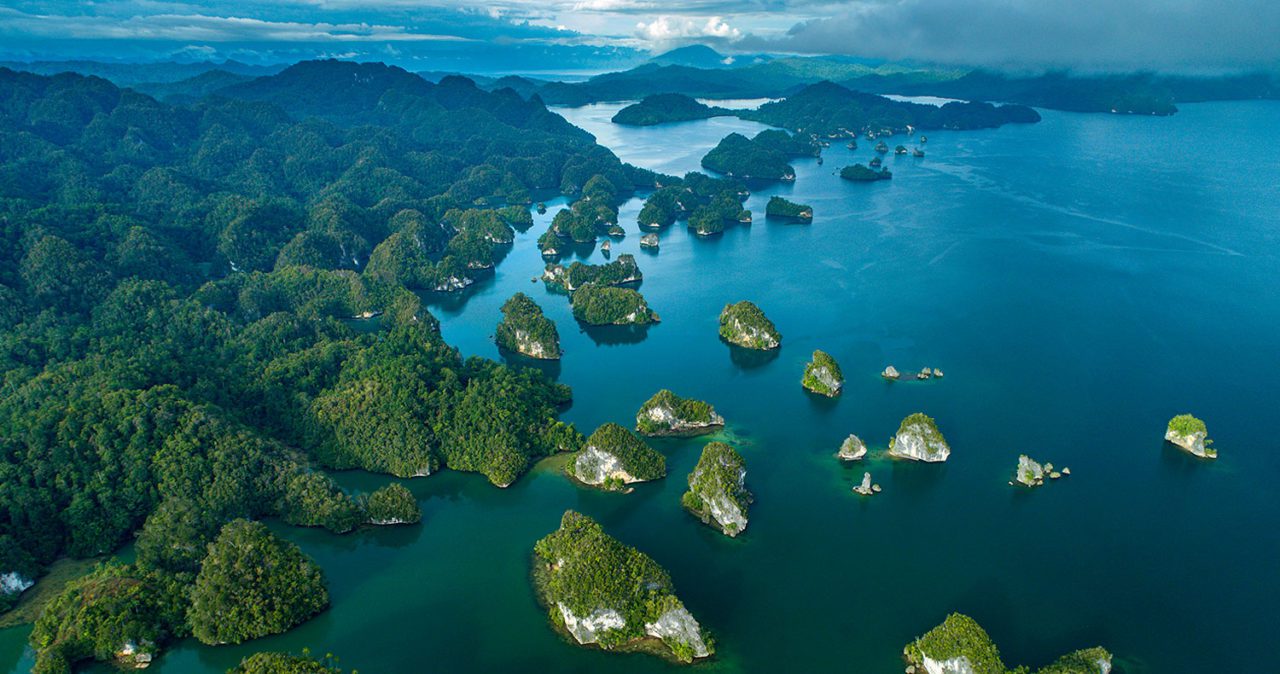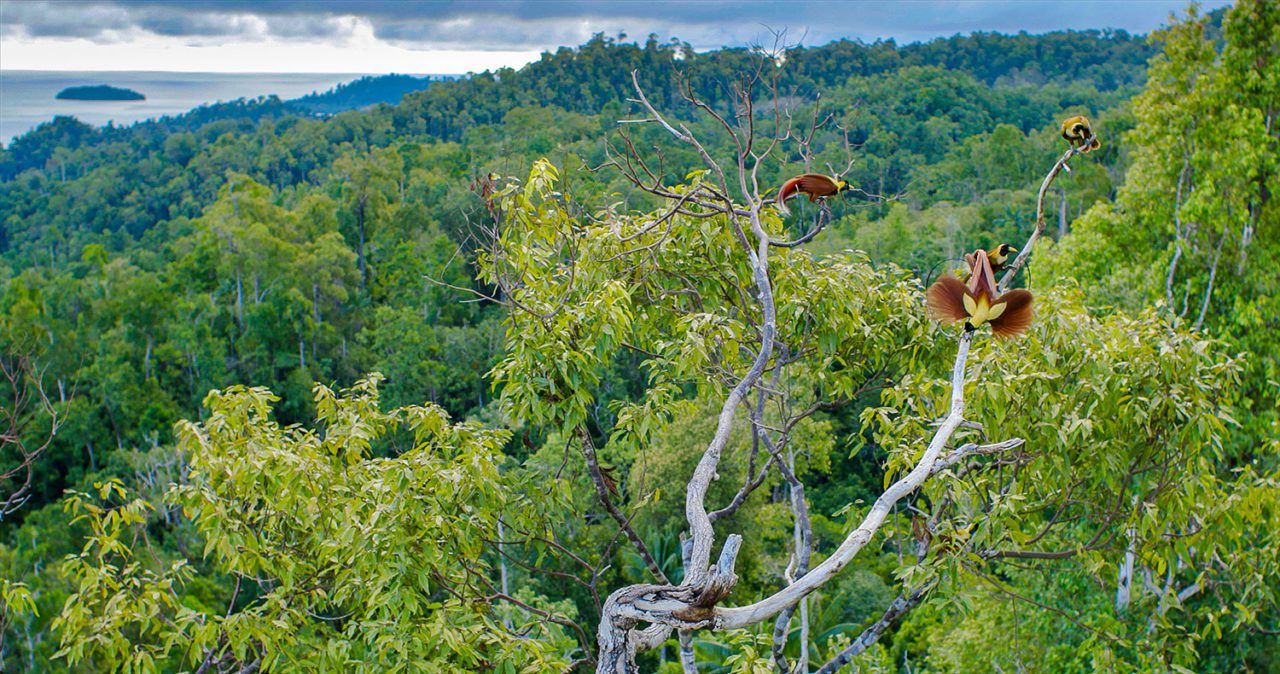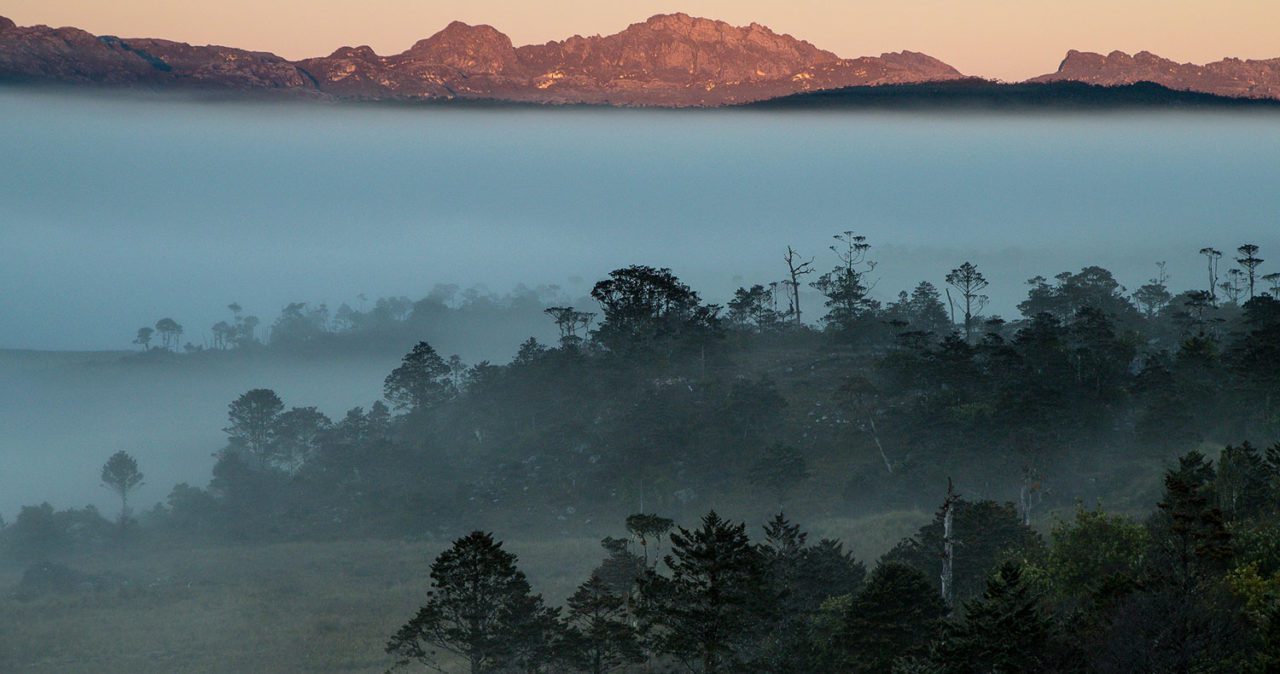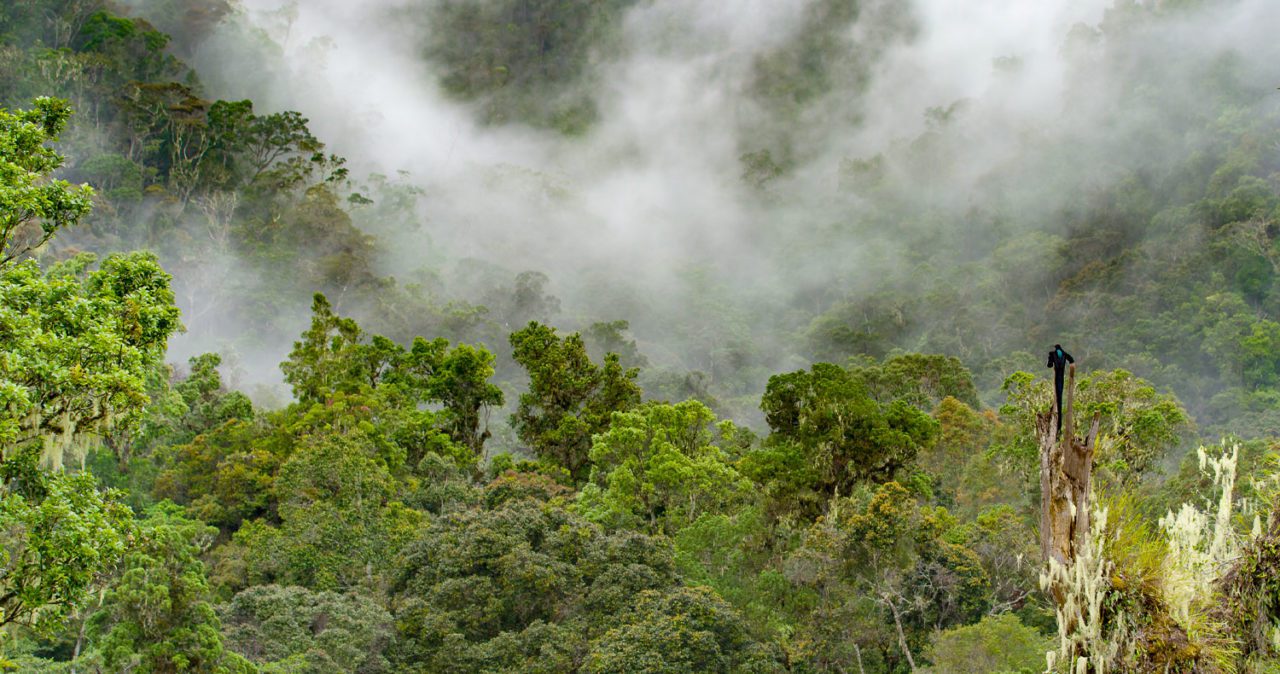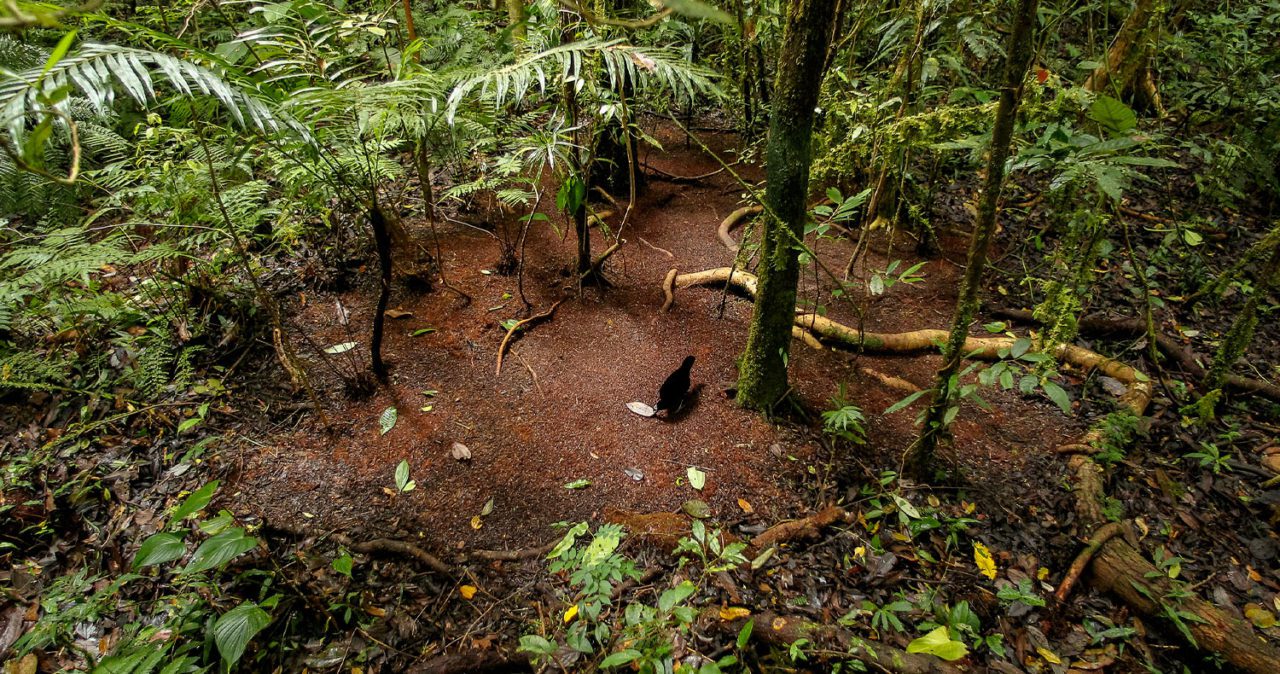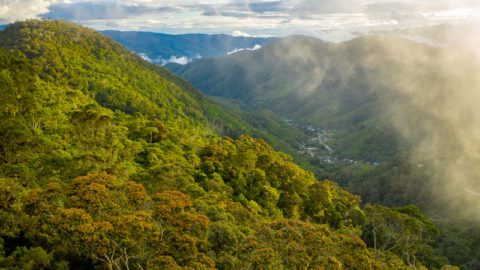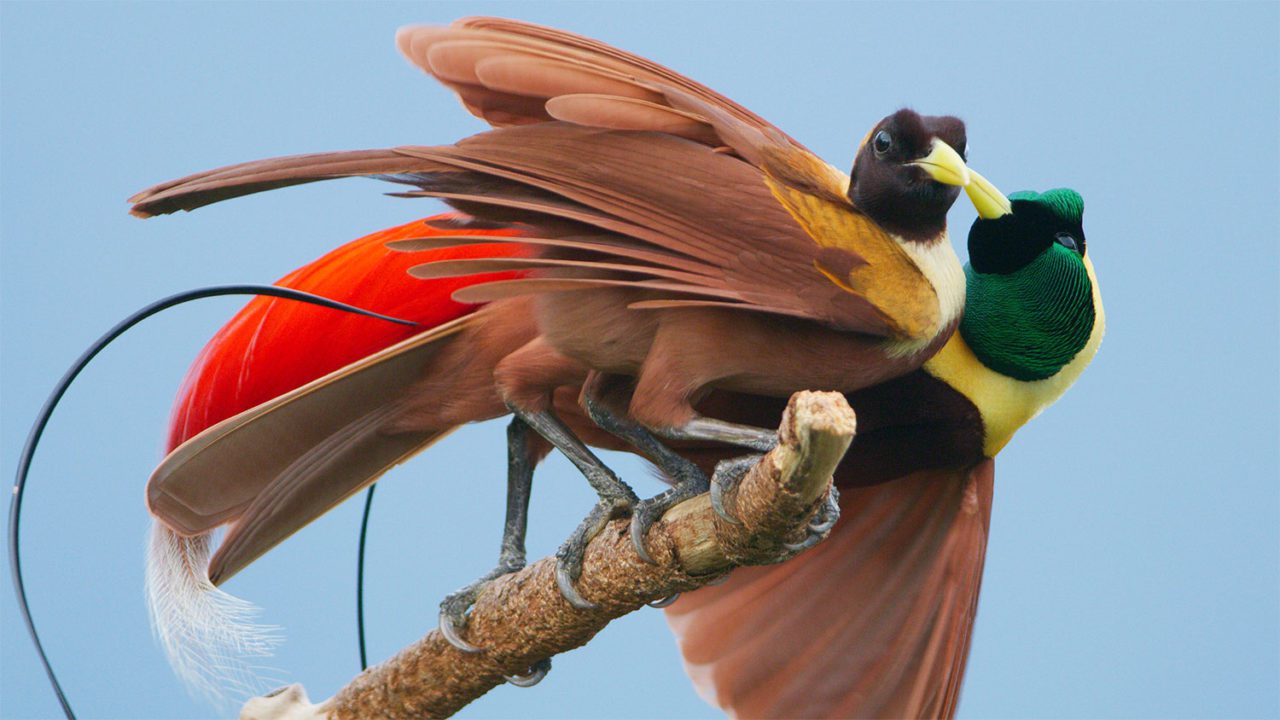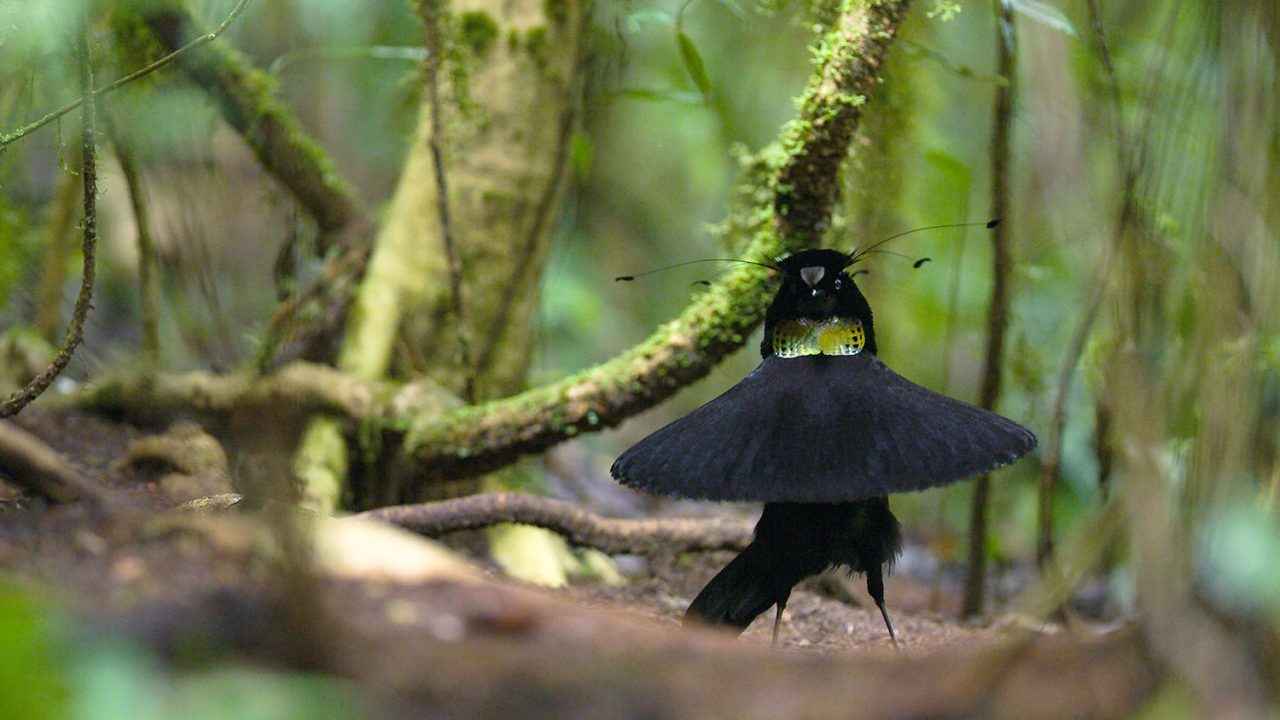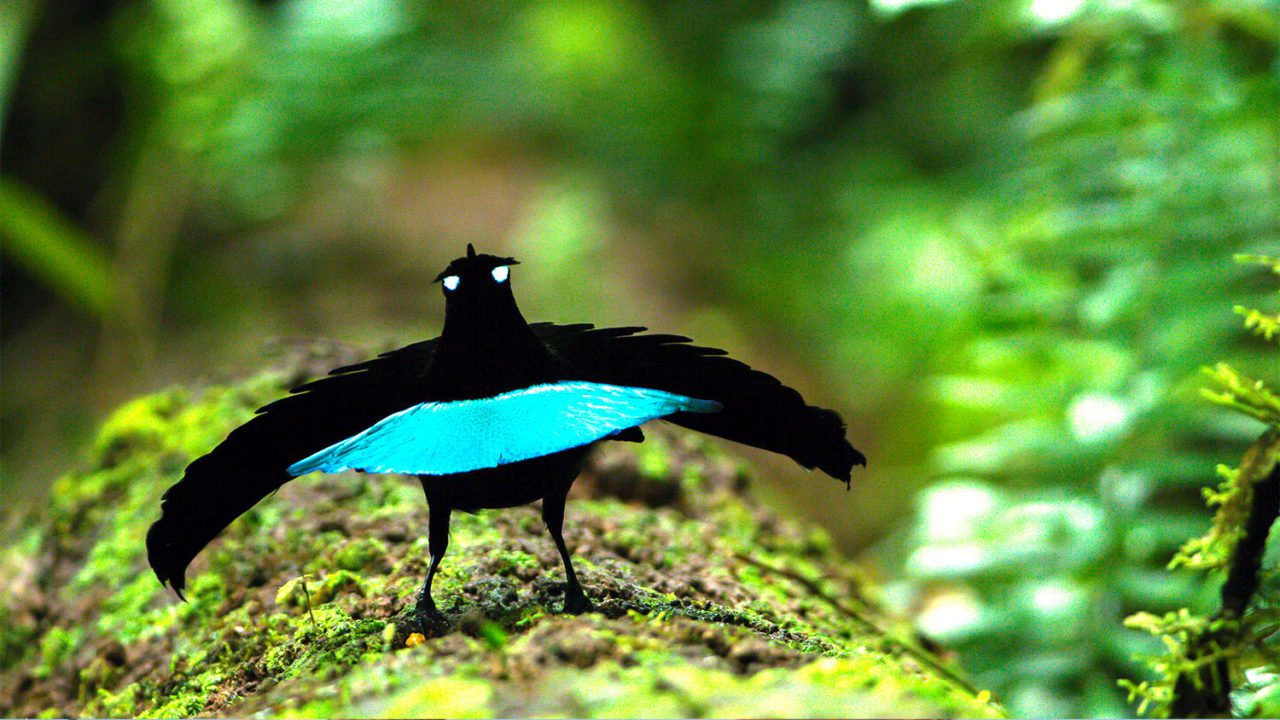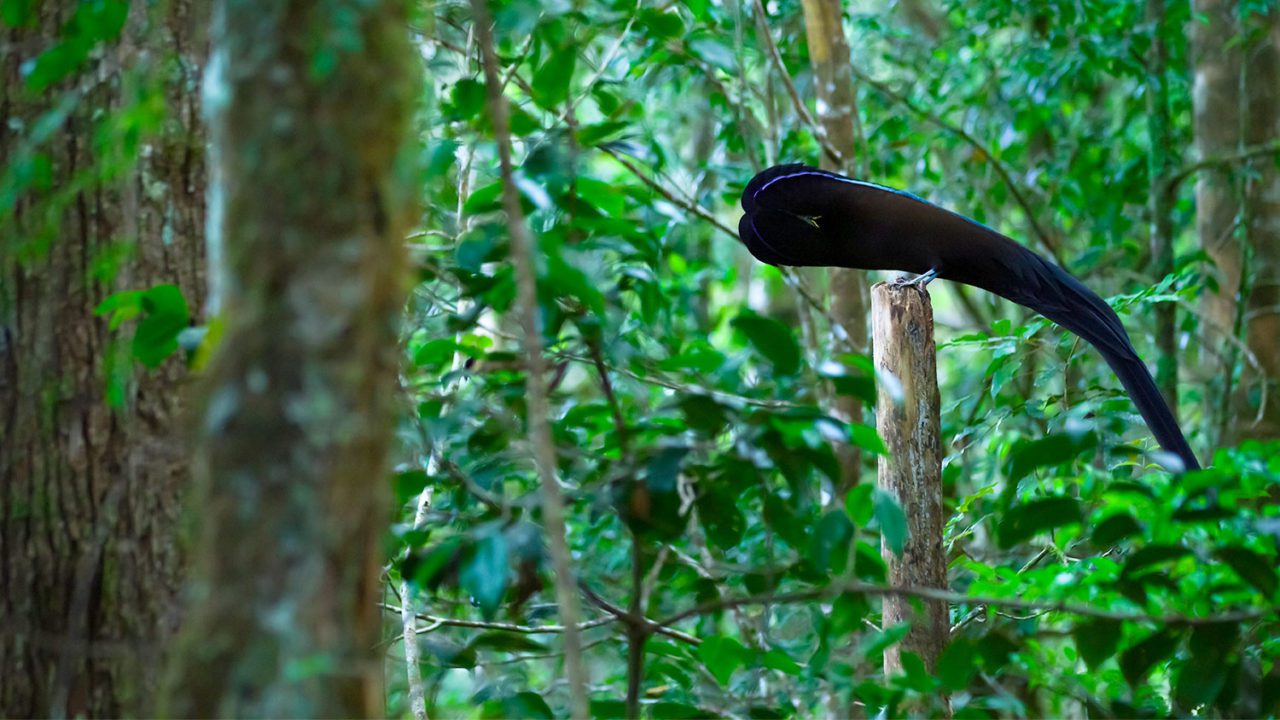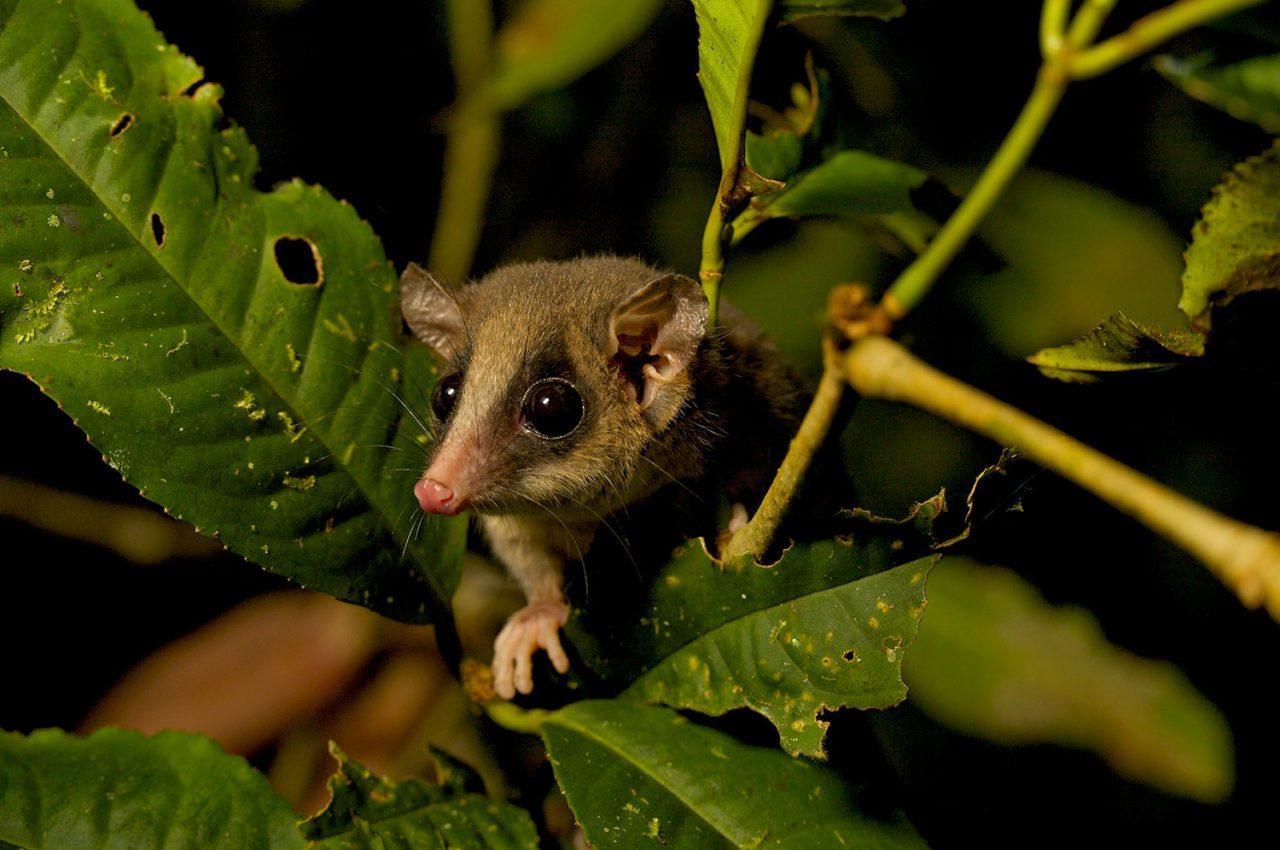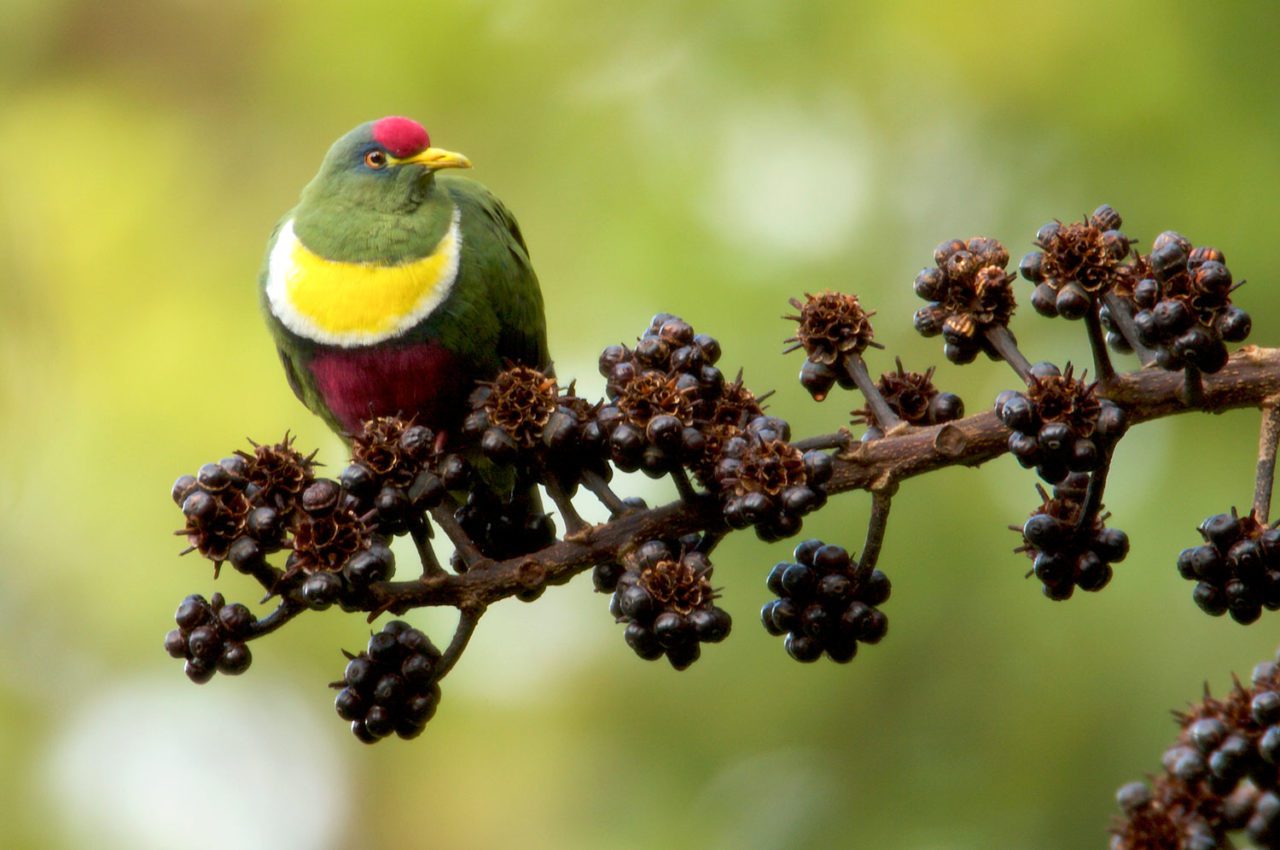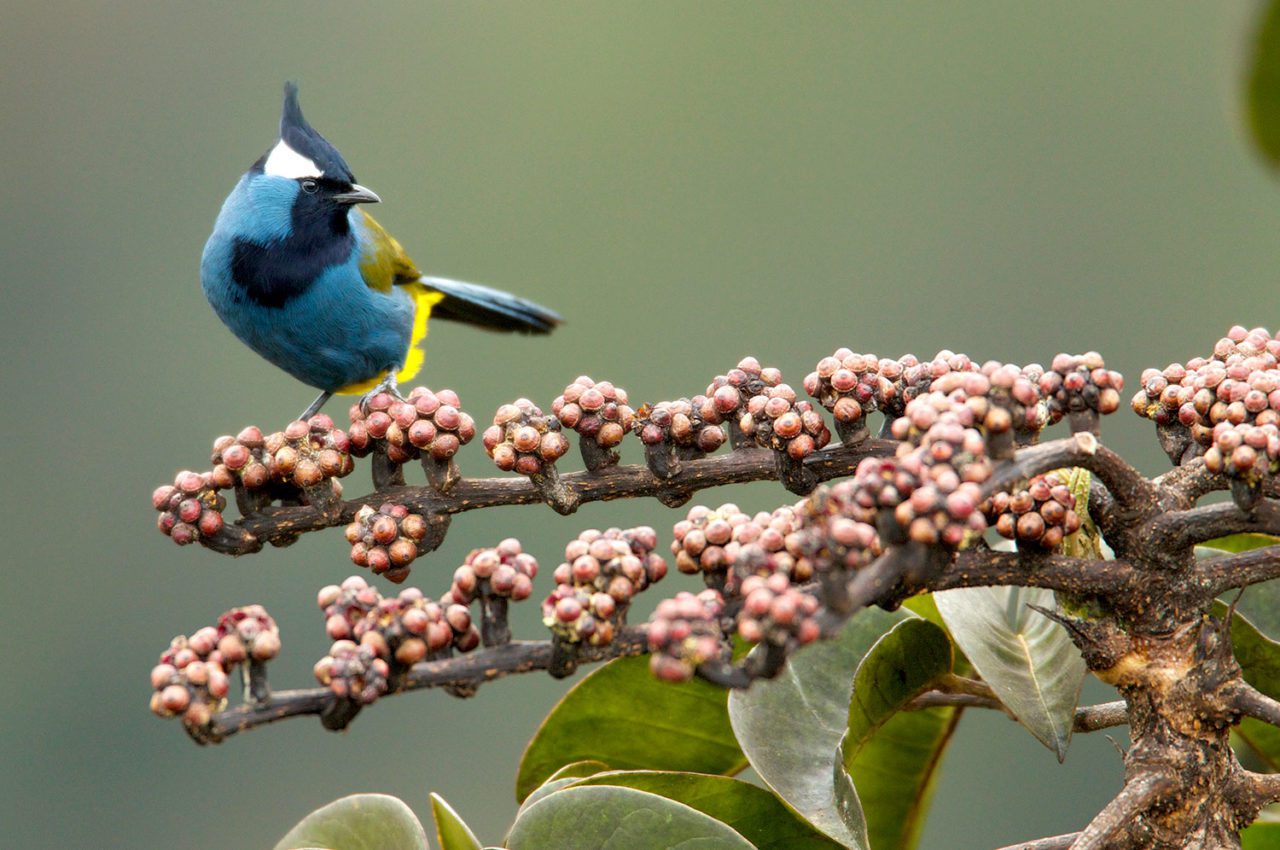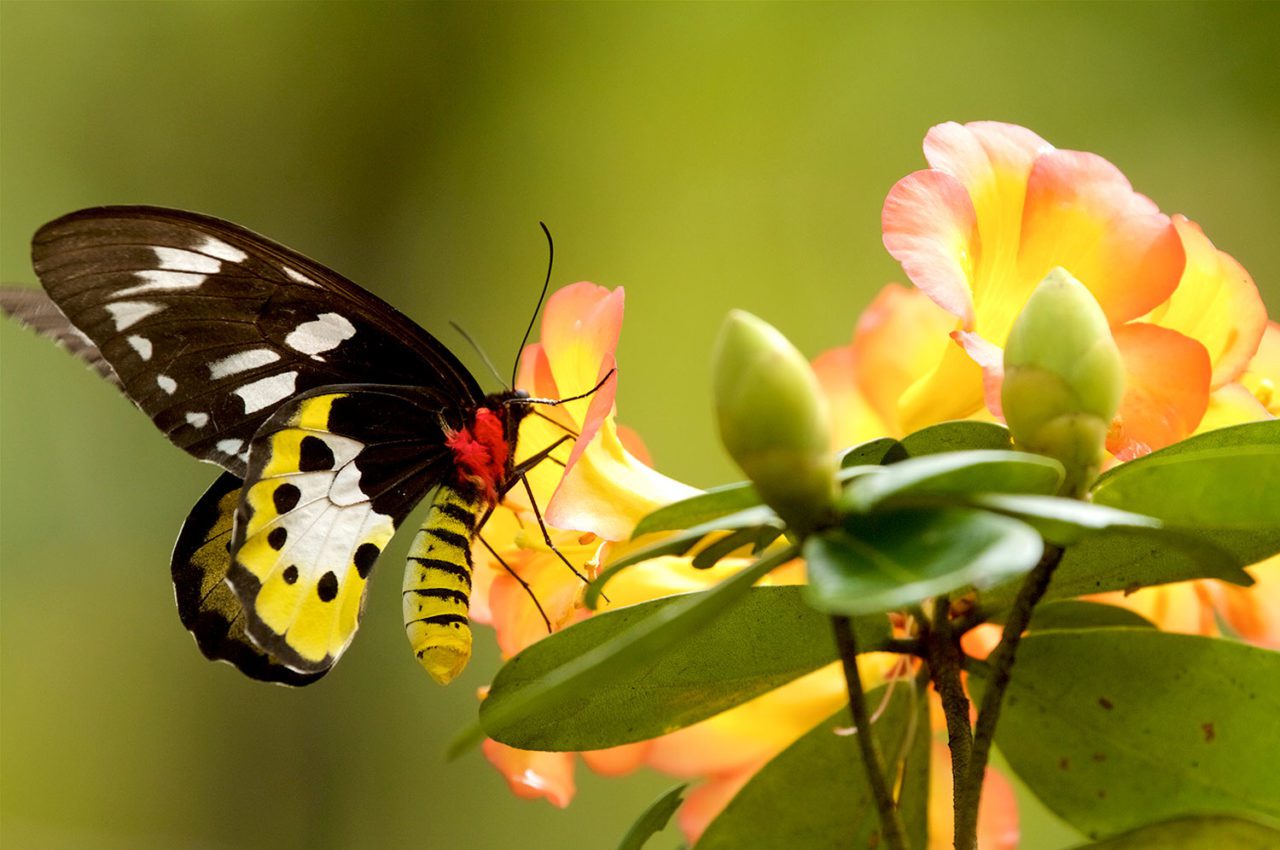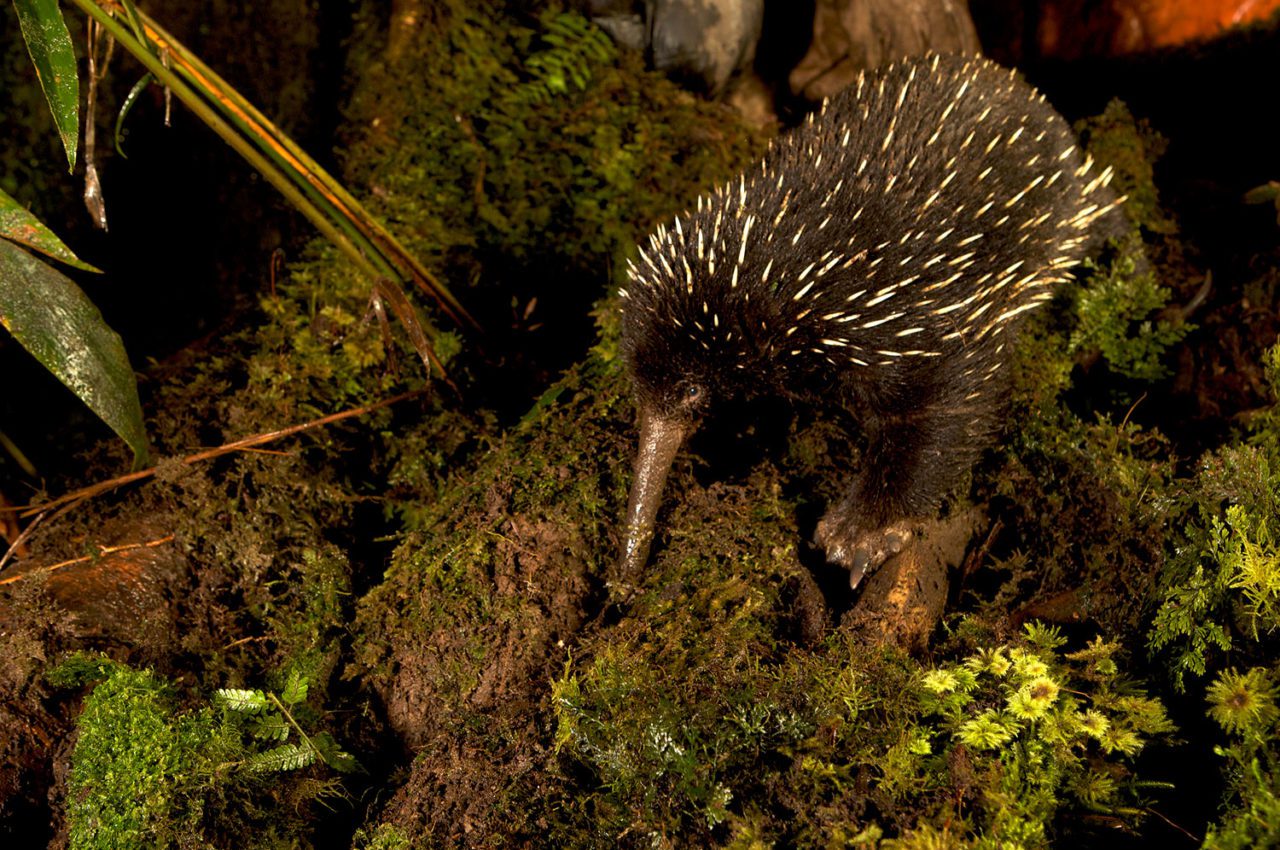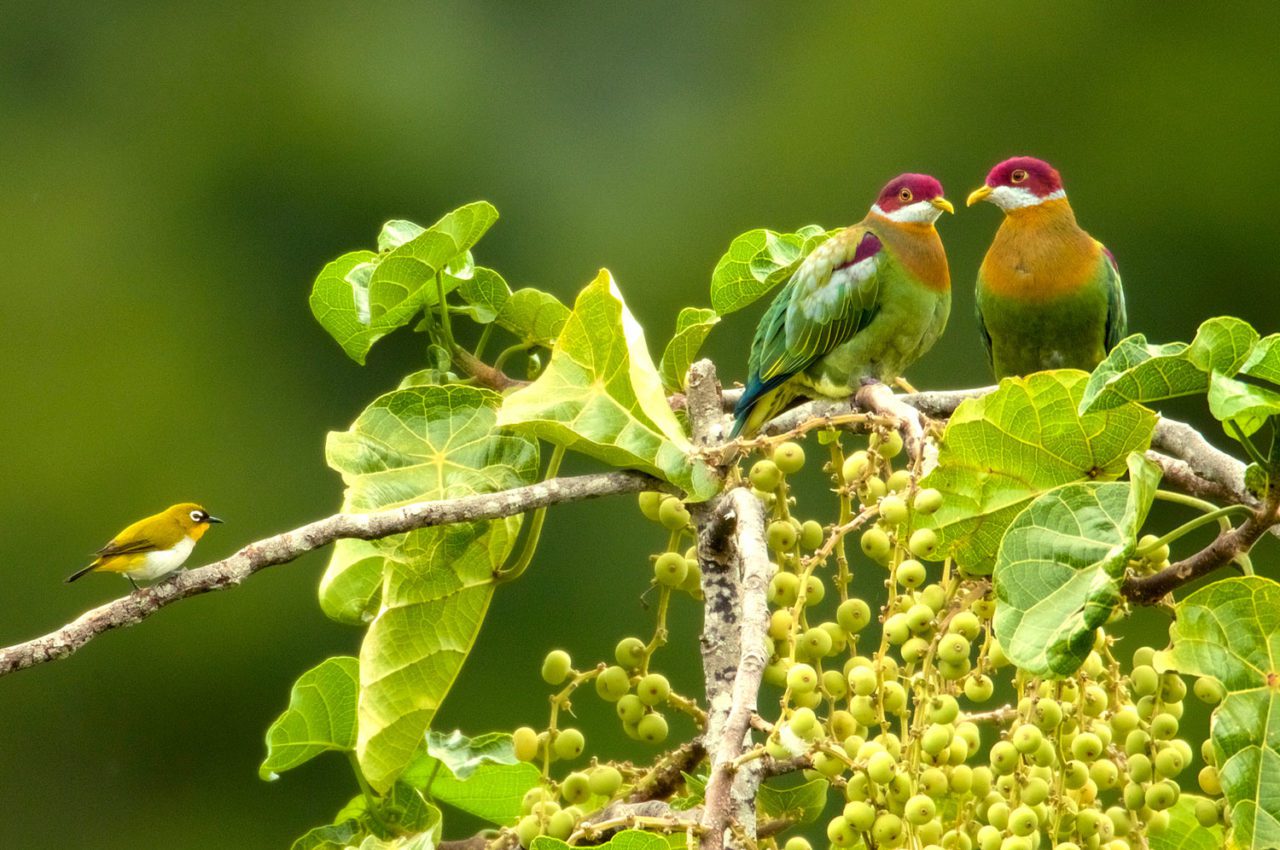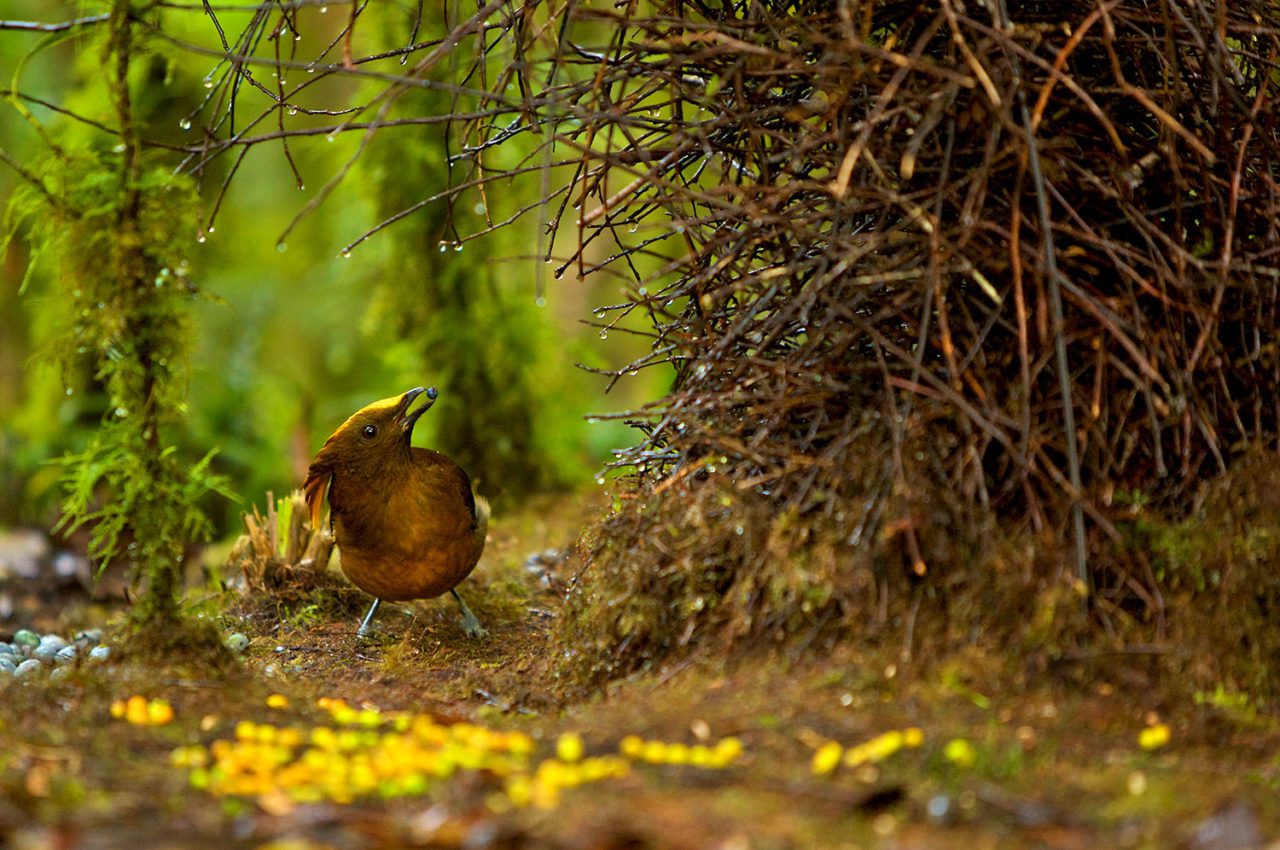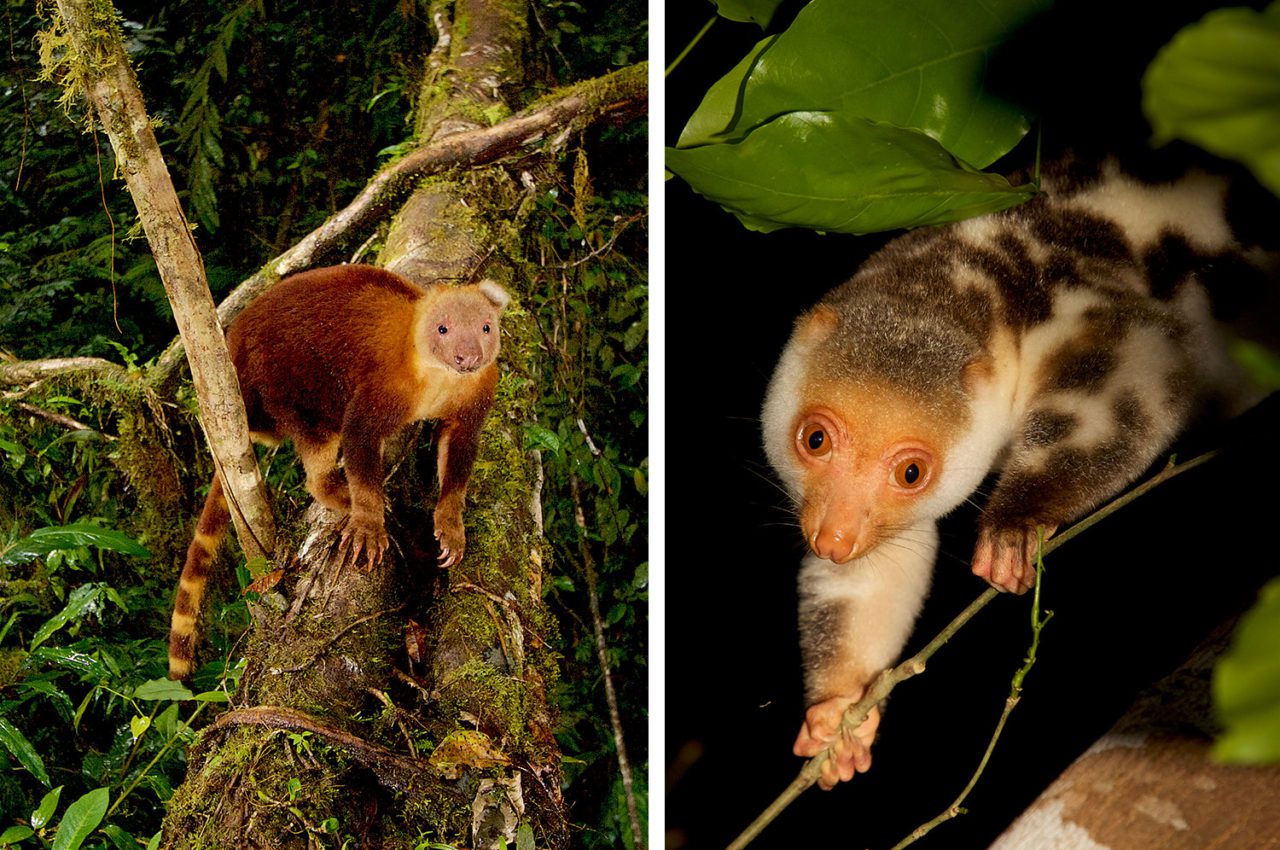Photo Essay: The Fragile Forest Home of the Birds-of-Paradise
Photos and Story by Tim Laman
Photo by Tim Laman. December 19, 2020More than 40 species of birds-of-paradise live in New Guinea's swaths of the Indo-Pacific rainforest region, one of the largest intact tropical forested areas on Earth.
From the Winter 2021 issue of Living Bird magazine. Subscribe now.
In the following slideshows, explore the landscapes, forests, birds, mammals, and insects of New Guinea—the most species-rich island on Earth.
Biodiversity Abounds, From Treetops to Forest Floor
The Indo-Pacific forest region sprawls across the islands around New Guinea. Among the Raja Ampat Islands of West Papua, Indonesia, Red Birds-of-Paradise dance in the treetops for their breeding displays. On the Indonesian side of the island of New Guinea, the high peaks of the Jayawijaya Mountains rise above dense forest; a Black Sicklebill calls from a perch overlooking rugged, mist-shrouded cloud forest; and a male Western Parotia cleans fallen leaves from his breeding display court on the forest floor in the Arfak Mountains.

The Raja Ampat Islands of West Papua, Indonesia. 
Red Birds-of-Paradise dance in the treetops during their breeding displays. 
The high peaks of the Jayawijaya Mountains rise above dense forest. 
A Black Sicklebill vocalizes from his calling perch overlooking the rugged, mist-shrouded cloud forest of the Arfak Mountains in West Papua, Indonesia. 
A male Western Parotia cleans fallen leaves from his breeding display court on the forest floor in the Arfak Mountains.
Conservation in New Guinea
Forest Ambassadors
The stars of the show in National Geographic and PBS Nature TV documentaries, the more than 40 species in the birds-of-paradise family have become icons of New Guinea’s rainforests. Their extraordinary beauty is unlike that of any other birds on Earth, but it’s their wide range of bizarre breeding behaviors that captivates audiences—from elaborate dancing and flaring their elegant plumes to shape-shifting displays that make these exotic species seem like avian transformers.

Male and female Red Birds-of-Paradise. 
A Western Parotia dances on his display court. 
A Vogelkop Lophorina does its blue smiley-face display to attract a mate. 
A Black Sicklebill transforms its body sideways during his display.
Home to More Species Than Any Other Island on Earth
The island of New Guinea contains more than 1,700 species of birds, mammals, amphibians, and reptiles. But unlike other rainforests in the Oceania region, New Guinea lacks native species of primates and most other fruit-eating mammals. Instead the forests have coevolved with fruit-eating birds serving as the primary seed dispersers. Without these birds, New Guinea’s spectacularly biodiverse forests as we know them would not exist.

Long-tailed pygmy possum. 
White-breasted Fruit-Dove. 
Crested Berrypecker. 
Bird-wing butterfly. 
Long-beaked echidna. 
Black-fronted White-eye (left), and Ornate Fruit-Doves. 
Golden-fronted Bowerbird. 
Goodfellow’s tree kangaroo (left); common spotted cuscus (right).
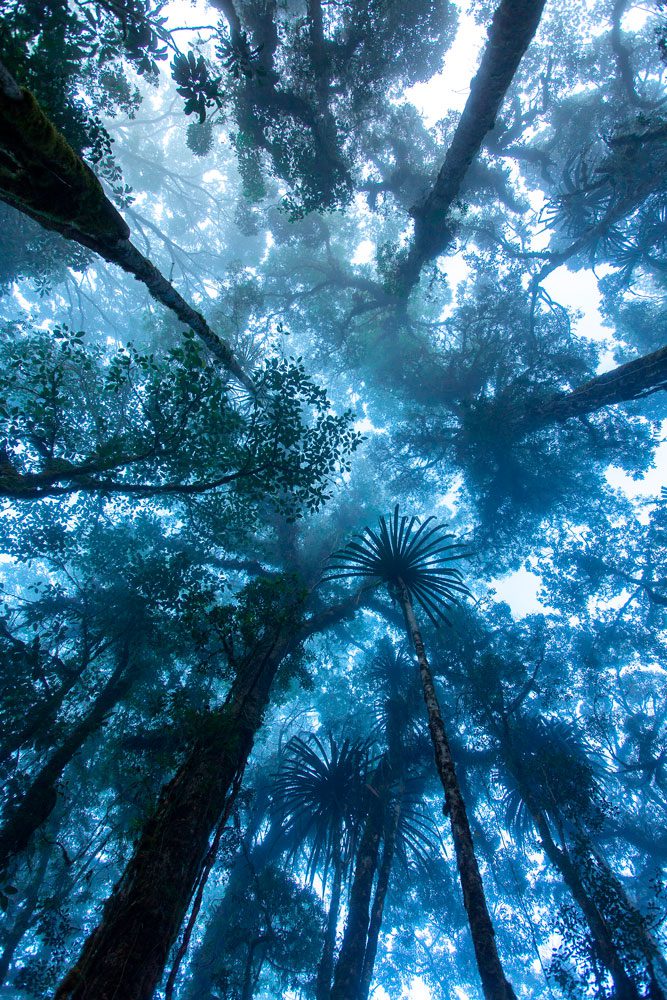
Lungs for the Planet
The pandanus trees in the cloud forest of the Arfak Mountains form a dense canopy of biomass that takes in carbon dioxide and releases oxygen back into the atmosphere. The intact rainforests of New Guinea and the Indo-Pacific region are one of the world’s most important greenhouse gas reservoirs, as they store vast amounts of carbon in their trees and soils.
The future of the planet, it could be said, is tied to the forest home of the birds-of-paradise.
Tim Laman is a research associate in ornithology at Harvard University, contributing photographer for National Geographic magazine, and cofounder with Edwin Scholes of the Cornell Lab of Ornithology’s Birds-of-Paradise Project.

All About Birds
is a free resource
Available for everyone,
funded by donors like you
American Kestrel by Blair Dudeck / Macaulay Library
